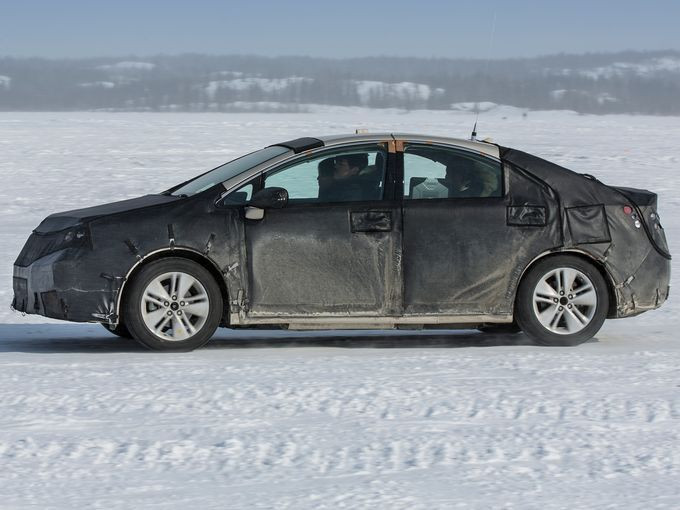Toyota FCV Hydrogen Fuel Cell Car At The CES 2014: Will This Be The HFC Car To Make History?

At the 2013 Detroit North American International Auto Show, Toyota displayed its futuristic-looking FCV-R hydrogen fuel cell concept car. When asked to peek under the hood, a Toyota representative smiled. “There isn’t an engine under there,” he said. “We’re using it to store the brochures.”
Almost a year after of showing off that flashy blue shell in Detroit, Toyota Motor Corp. (TYO:7203) rolled into the 2014 Consumer Electronics Show in Las Vegas this week with a working test version of its hydrogen fuel cell vehicle.
The test version is still under wraps to hide the external design features, but it’s what’s under the hood that really matters, and what Toyota hopes heralds the future of motor transport: a tank of compressed hydrogen gas and an electric drivetrain powered by a reaction between hydrogen and oxygen whose byproduct is water vapor.
The so-called “Car of the Future,” as Toyota bills it, is expected to hit the U.S. market next year in California, where most of the very few public hydrogen fueling stations are currently located.
There are many challenges to mainstreaming hydrogen fuel cell vehicles. Toyota says it has a handle on one of them: price. It hasn’t released any details recently in that regard except to say that it has managed to reel in costs by utilizing many components it has already developed. Early last year, Chris Hostetter, head of Toyota USA strategic planning, told Automotive News the car would cost from $50,000-plus to as much as six figures, meaning the rolled-out FCV-R could be priced around the same as the Tesla Model S, carving out a niche among wealthier California early adopters.
The bigger challenge for the wider adoption of HFCVs will be the lack of refueling infrastructure. The U.S. Department of Energy currently lists 10 public hydrogen refueling stations, compared with about 6,700 public electric vehicle charging stations. The virtual absence of hydrogen outlets will have to be addressed before Toyota or any other automaker can steer the public toward HFCVs.
To that end Toyota says it’s working with University of California Irvine’s Advanced Power and Energy Program to establish a roadmap for where hydrogen refueling stations should be strategically placed. The model assumes HFCV owners will want to be within six minutes of the nearest refueling station. That kind of population is still many years off, but California is currently investing $200 million to build up to 100 stations in the next decade.
© Copyright IBTimes 2024. All rights reserved.












